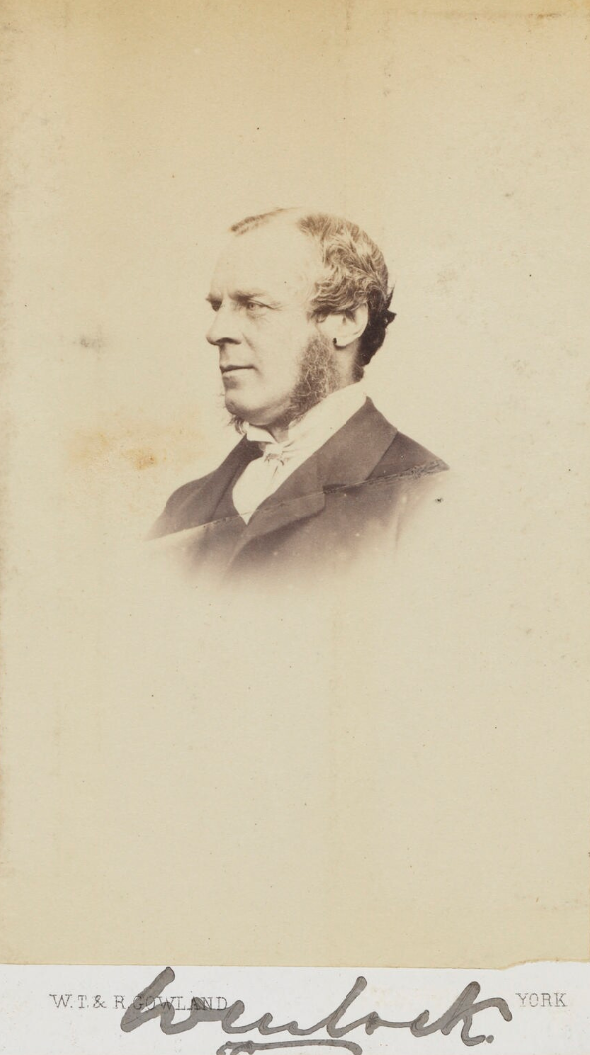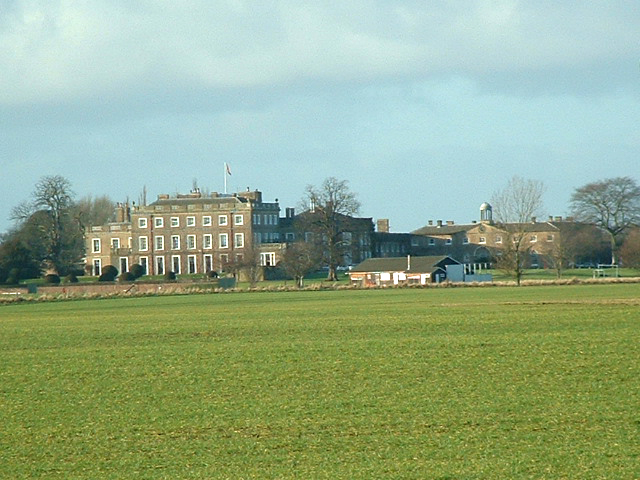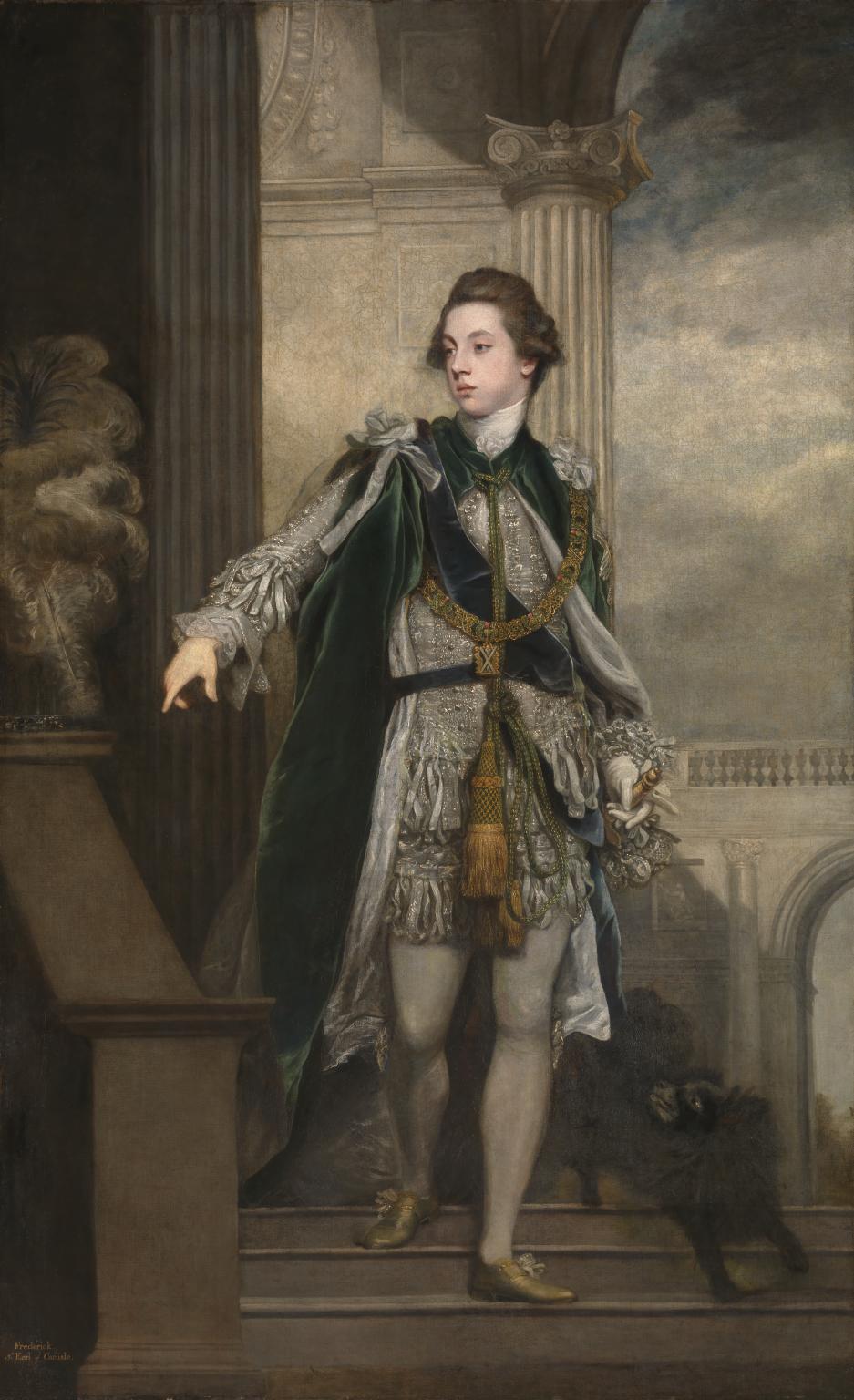|
Lord Lieutenant Of The East Riding Of Yorkshire
This is a list of people who have served as Lord Lieutenant for the East Riding of Yorkshire. The office was established after the English Restoration in 1660, when a Lord Lieutenant was appointed for each Riding of Yorkshire. Since 1721, all Lord Lieutenants have also been Custos Rotulorum of the East Riding of Yorkshire, and for part of the period also Lieutenants of the Town and County of the Town of Kingston upon Hull. It was abolished on 31 March 1974 with the creation of the county of Humberside, but was re-created upon the abolition of Humberside on 1 April 1996. Lord Lieutenants of the East Riding of Yorkshire to 1974 *John Belasyse, 1st Baron Belasyse 26 July 1660 – 12 April 1673 *James Scott, 1st Duke of Monmouth 12 April 1673 – 20 December 1679 * John Sheffield, 3rd Earl of Mulgrave 20 December 1679 – 17 November 1682 *Charles Seymour, 6th Duke of Somerset 17 November 1682 – 13 October 1687 * John Sheffield, 3rd Earl of Mulgrave 13 October 1687 – 5 October 1688 ... [...More Info...] [...Related Items...] OR: [Wikipedia] [Google] [Baidu] |
Lord Lieutenant
A lord-lieutenant ( ) is the British monarch's personal representative in each lieutenancy area of the United Kingdom. Historically, each lieutenant was responsible for organising the county's militia. In 1871, the lieutenant's responsibility over the local militia was removed. However, it was not until 1921 that they formally lost the right to call upon able-bodied men to fight when needed. Lord-lieutenant is now an honorary titular position usually awarded to a retired notable person in the county. Origins England and Wales Lieutenants were first appointed to a number of English counties by King Henry VIII in the 1540s, when the military functions of the sheriffs were handed over to them. Each lieutenant raised and was responsible for the efficiency of the local militia units of his county, and afterwards of the yeomanry and volunteers. He was commander of these forces, whose officers he appointed. These commissions were originally of temporary duration, and only when the ... [...More Info...] [...Related Items...] OR: [Wikipedia] [Google] [Baidu] |
Arthur Ingram, 6th Viscount Of Irvine
Arthur Ingram, 6th Viscount of Irvine (21 December 1689 – 30 May 1736), styled the Honourable Arthur Ingram until 1721, was a British landowner and politician who sat in the House of Commons from 1715 until 1721 when he succeeded to the peerage as Viscount Irvine. Ingram was the third son of Arthur Ingram, 3rd Viscount of Irvine, by Isabella Machell, daughter of John Machell, Member of Parliament for Horsham, of Hills, Sussex. He was returned to Parliament for Horsham in 1715, a seat he held until 1721, when he succeeded his elder brother Rich in the viscountcy. This was a Scottish peerage and did not entitle him to an automatic seat in the House of Lords although he was forced to resign his seat in Parliament as Scottish peers were barred from sitting in the House of Commons. In 1728 he was made Lord-Lieutenant of the East Riding of Yorkshire, which he remained until his death. The 6th Viscount died unmarried but testate in May 1736, aged 46, and was succeeded in the viscou ... [...More Info...] [...Related Items...] OR: [Wikipedia] [Google] [Baidu] |
Michael Willoughby, 11th Baron Middleton
Colonel Michael Guy Percival Willoughby, 11th Baron Middleton (21 October 1887 – 16 November 1970), was a British peer and soldier. Biography Willoughby was the second son of Godfrey Willoughby, 10th Baron Middleton, and was educated at Wellington College and the Royal Military College. In 1936, Willoughby was appointed Lord Lieutenant of the East Riding of Yorkshire. From 1931, he was President of University College, Hull, (later the University of Hull) and was its first Chancellor from 1954 to 1970. Military career Graduating from the Royal Military College on 9 October 1907, Willoughby was commissioned a second lieutenant in the South Lancashire Regiment (The Prince of Wales's Volunteers). He transferred to the 17th Lancers 26 October 1907 and on 26 October 1909 to the 10th Duke of Cambridge's Own Lancers (Hodson's Horse) of the Indian Army. He was promoted lieutenant 9 January 1910. Willoughby was stationed in India at the outbreak of the First World War, as the r ... [...More Info...] [...Related Items...] OR: [Wikipedia] [Google] [Baidu] |
Robert Wilfrid De Yarburgh-Bateson, 3rd Baron Deramore
Lieutenant-Colonel Robert Wilfrid de Yarburgh-Bateson, 3rd Baron Deramore (5 August 1865 – 1 April 1936) was a British peer and an officer in the Yorkshire Hussars. He served as Lord Lieutenant of the East Riding of Yorkshire from 1924 until his death in 1936. He was the eldest son of George de Yarburgh-Bateson, 2nd Baron Deramore, and his wife Mary Yarburgh (whose surname the family assumed in 1876). He was educated at Eton College. In April 1891, he was appointed a deputy lieutenant of the East Riding of Yorkshire. He succeeded his father in the peerage in 1893. Commissioned into the Yorkshire Hussars as a second lieutenant on 4 January 1893, he was promoted captain on 28 April 1897, major on 18 June 1904, and lieutenant-colonel on 2 June 1915. He was awarded the Territorial Decoration on 20 June 1913. On 15 July 1897, he married (Caroline) Lucy Fife; before she died on 26 October 1901, they had one daughter: *Hon. Moira Faith Lilian de Yarburgh-Bateson (9 June 1898 – 21 D ... [...More Info...] [...Related Items...] OR: [Wikipedia] [Google] [Baidu] |
Charles Wilson, 2nd Baron Nunburnholme
Charles Henry Wellesley Wilson, 2nd Baron Nunburnholme, CB, DSO, (24 January 1875 – 15 August 1924), was a British peer, and one of the heirs to the Thomas Wilson Sons & Co., a Hull-based shipping company that built a near-monopoly over affordable travel packages from Scandinavia and the Baltic. He was an officer in the Volunteers and saw active service in the Second Boer War and World War I. During the later war he was distinguished for the number of new units that he recruited for the war effort, notably the ' Hull Pals'. Biography He was the eldest son of Charles Wilson, 1st Baron Nunburnholme (1833–1907), who with his brother Arthur were joint managers of the firm founded by their father Thomas. The company had been managed by a non-family managing director since 1901, and was sold in 1916. His mother, Florence Jane Helen Wellesley, was a great-niece of the Duke of Wellington. Young Charles Wilson was educated at Eton.''Burke's'', 'Nunburnholme'.''Who was Who''. Mili ... [...More Info...] [...Related Items...] OR: [Wikipedia] [Google] [Baidu] |
Marmaduke Constable-Maxwell, 11th Lord Herries Of Terregles
Marmaduke Constable-Maxwell, 11th Lord Herries of Terregles, (4 October 1837 – 5 October 1908) was Lord Lieutenant of the East Riding of Yorkshire from 1880 and Lord-Lieutenant of Kirkcudbrightshire from 1885 until his death. He was educated at Stonyhurst. In 1875, he married the Hon. Angela Mary Charlotte Fitzalan-Howard, the 2nd daughter of the 1st Lord Howard of Glossop: they had two daughters. *Gwendolen became the second wife of the 15th Duke of Norfolk.; * Hon. Angela Mary Constable-Maxwell who married Eric Drummond, 7th Earl of Perth. References People educated at Stonyhurst College 1837 births 1908 deaths Herries, Marmaduke Constable Maxwell, 1st Baron Lord-Lieutenants of the East Riding of Yorkshire Lord-Lieutenants of Kirkcudbright Lords Herries of Terregles Marmaduke ''Marmaduke'' is a newspaper comic strip revolving around the Winslow family and their Great Dane, Marmaduke, drawn by Brad Anderson from June 1954 to 2015. Publication hi ... [...More Info...] [...Related Items...] OR: [Wikipedia] [Google] [Baidu] |
Beilby Lawley, 2nd Baron Wenlock
Beilby Richard Lawley, 2nd Baron Wenlock (2 April 1818 – 6 November 1880) was an English nobleman, eldest son of Paul Thompson, 1st Baron Wenlock and 8th Baronet. He succeeded in the Barony and Baronetcy and to the family estate at Escrick, Yorkshire on the death of his father in 1852. He served in the Yorkshire Hussars latterly as Colonel, was Member of Parliament for Pontefract 1851–1852 and was Lord Lieutenant of the East Riding of Yorkshire 1864–1880. He married Lady Elizabeth Grosvenor, daughter of Richard Grosvenor, 2nd Marquess of Westminster, and had eight children, including four sons who each in turn succeeded to the titles. Among his children were: *Hon. Caroline Elizabeth Lawley (1848 – 13 July 1934), married Lt.-Col. Caryl Molyneaux (d. 1912), son of Charles Molyneux, 3rd Earl of Sefton and had issue *Hon. Alethea Jane Lawley (1851 1929), historian, married the Italian musicologist and composer Taddeo Wiel (1849–1920) *Beilby Lawley, 3rd Baron Wenlock (1849 ... [...More Info...] [...Related Items...] OR: [Wikipedia] [Google] [Baidu] |
George Howard, 7th Earl Of Carlisle
George William Frederick Howard, 7th Earl of Carlisle, (18 April 1802– 5 December 1864), styled Viscount Morpeth from 1825 to 1848, was a British statesman, orator, and writer. Life Carlisle was born in Westminster, London, the eldest son of George Howard, 6th Earl of Carlisle by his wife Lady Georgiana Cavendish, eldest daughter of William Cavendish, 5th Duke of Devonshire. Lord Lanerton and Charles Howard were his younger brothers. He was educated at Eton and Christ Church, Oxford, where he earned a reputation as a scholar and writer of graceful verse, obtaining in 1821 both the chancellor's and the Newdigate prizes for a Latin poem, ''Paestum'','''The Pride of Yorkshire''', leaflet for exhibition on George Howard, Castle Howard, 2010 and an English one. He maintained his interest in poetry throughout his life, exchanging sonnets with William Wordsworth. In 1826 he accompanied his maternal uncle, the Duke of Devonshire, to the Russian Empire, to attend the coronation of ... [...More Info...] [...Related Items...] OR: [Wikipedia] [Google] [Baidu] |
Paul Thompson, 1st Baron Wenlock
Paul Beilby Lawley Thompson, 1st Baron Wenlock (1 July 1784 – 9 May 1852), born Paul Beilby Lawley, was an English nobleman and Whig politician. Life Thompson was born Paul Beilby Lawley, the youngest son of Sir Robert Lawley, 5th Baronet and Jane Thompson. In 1820, he inherited the estate of Escrick in Yorkshire from his uncle, Richard Thompson, and changed his name to Paul Beilby Thompson. He entered Parliament for Wenlock, in Shropshire in 1828, and retained the seat until 1832. He then stood for the East Riding of Yorkshire, and was member there until 1837. In 1839, he was created Baron Wenlock, of Wenlock in the County of Salop, a title previously held by his eldest brother Robert, who died without issue. Upon ennoblement, he was given a Royal Licence to change his name to Paul Beilby Lawley Thompson, and allow his heirs to carry only the Lawley surname. He married Caroline Neville (d. 1868), daughter of Richard Griffin, 2nd Baron Braybrooke, by whom he had five ... [...More Info...] [...Related Items...] OR: [Wikipedia] [Google] [Baidu] |
George Howard, 6th Earl Of Carlisle
George Howard, 6th Earl of Carlisle of Castle Howard, (17 September 17737 October 1848), styled Viscount Morpeth until 1825, was a British statesman. He served as Lord Privy Seal between 1827 and 1828 and in 1834 and was a member of Lord Grey's Whig government as Minister without Portfolio between 1830 and 1834. Early life Carlisle was the eldest son of Frederick Howard, 5th Earl of Carlisle of Castle Howard, and his wife Lady Margaret Caroline Leveson-Gower, Among his siblings were brothers: Hon. William Howard, Maj. Hon. Frederick Howard, and the Very Rev. Hon. Henry Howard, Dean of Lichfield; and sisters: Lady Isabella Howard (wife of John Campbell, 1st Baron Cawdor), Lady Elizabeth Howard (wife of John Manners, 5th Duke of Rutland), and Lady Gertrude Howard (wife of William Sloane-Stanley). His paternal grandparents were Henry Howard, 4th Earl of Carlisle and, his second wife, Hon Isabella Byron (daughter of William Byron, 4th Baron Byron and relative of Lord Byron). ... [...More Info...] [...Related Items...] OR: [Wikipedia] [Google] [Baidu] |
Henry Phipps, 1st Earl Of Mulgrave
General Henry Phipps, 1st Earl of Mulgrave, (14 February 17557 April 1831), styled The Honourable Henry Phipps until 1792 and known as The Lord Mulgrave from 1792 to 1812, was a British soldier and politician. He notably served as Foreign Secretary under William Pitt the Younger from 1805 to 1806. Background and education Lord Mulgrave was a younger son of Constantine Phipps, 1st Baron Mulgrave of New Ross), by his wife the Hon. Lepell, daughter of John Hervey, 2nd Baron Hervey, and was educated at Eton and the Middle Temple. Military career Lord Mulgrave entered the army in 1775, and eventually rose to the rank of General. He saw service in the Caribbean during the American Revolutionary War. In 1793 he was made Colonel of the 31st (Huntingdonshire) Regiment of Foot. Also in 1793, because he was on a mission to the King of Sardinia in Turin, he was near at hand when British forces captured the French port of Toulon, and he briefly took command of the British land forces ther ... [...More Info...] [...Related Items...] OR: [Wikipedia] [Google] [Baidu] |
Frederick Howard, 5th Earl Of Carlisle
Frederick Howard, 5th Earl of Carlisle (28 May 1748 – 4 September 1825) was a British peer, statesman, diplomat, and author. Life He was the son of Henry Howard, 4th Earl of Carlisle and his second wife Isabella Byron. His mother was a daughter of William Byron, 4th Baron Byron and his wife Frances Berkeley, a descendant of John Berkeley, 1st Baron Berkeley of Stratton. She was also a sister of William Byron, 5th Baron Byron and a great-aunt of George Gordon Byron, 6th Baron Byron, the poet. In 1798, Carlisle was appointed guardian to Lord Byron who later lampooned him in ''English Bards and Scotch Reviewers''. During his youth Carlisle was mentored by George Selwyn and was chiefly known as a man of pleasure and fashion. He was created a Knight of the Thistle in 1767, and entered the House of Lords in 1770. After he had reached thirty years of age, his appointment on a Commission sent out by Frederick North, Lord North, to attempt a reconciliation with the Thirteen Co ... [...More Info...] [...Related Items...] OR: [Wikipedia] [Google] [Baidu] |


